Last evening, my young son and his friends sprawled out on a backyard trampoline, staring at a great horned owl on a branch directly overhead.
They giggled as the owl hooted, squawked, preened and swiveled its head around. The owl seemed curious about the children, periodically staring straight down at them. More laughter.
Great horned owls are one of the most charismatic creatures to watch. They are both vocal and visible. Even better, they’re one of the most adaptable large birds in North America. There’s a good chance that a great horned owl lives in your neighborhood or at a nearby city park, woodlot or farm.
Now is the best time of year to go owling. You don’t need to be a life-listing birder or skilled field naturalist to enjoy spotting and listening to owls. It’s the perfect outdoor activity for the whole family. And if you are a serious bird nerd, the winter offers more rare owl opportunities, too.
Here’s a guide to enjoying owls this time of year.
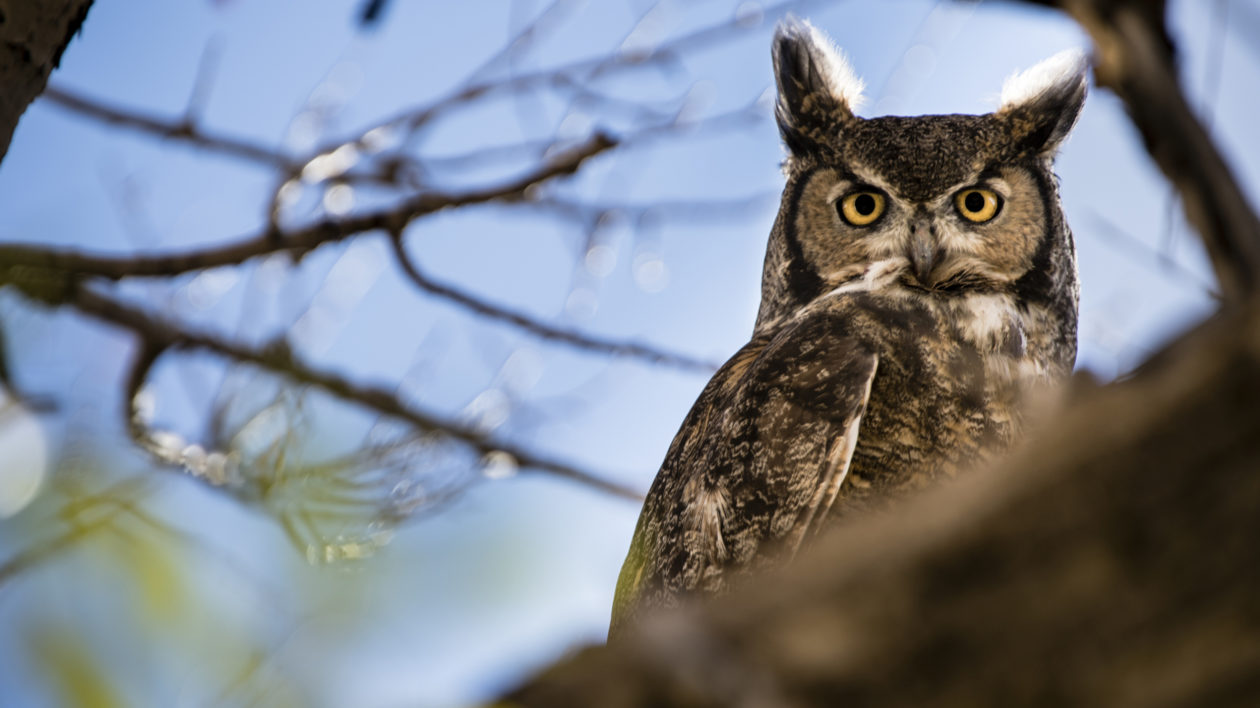
Great Horned Owls: Enjoying the Hooting Season
At this time of year, in the right location, a chorus of hoots provides the soundtrack to dawn and dusk.
That’s because, around October, male great horned owls begin setting up territories. Most great horned owls mate for life, but in the fall the pair begin a courtship display, loudly calling to each other.
The great horned owl’s hoot is pretty much unmistakable, although ornithology web sites often describe it in different ways. A common hooting pattern is a longer hoooooot, followed by two or three shorter hoots.
And these owls have a range of other vocalizations, too, some of which sound like barks or a screeching cat. (Cornell’s All About Birds site features some great audio of these different calls).
The owls continue setting up their territory this month, and begin setting up a nest.
They’ll use an abandoned nest previously used by a red-tailed hawk, squirrel or other critter. Come January, they’ll begin setting in the nest – far earlier than most other birds.
An evening walk is a great way to enjoy the spectacle. You can often get an owl to answer your own hoots. Once you hear one, scan thick tree branches and other potential perches. The great horned owl’s outline is unmistakable. You can often sneak closer and enjoy the owl’s antics up close.
Read more about the great horned owl hooting season.
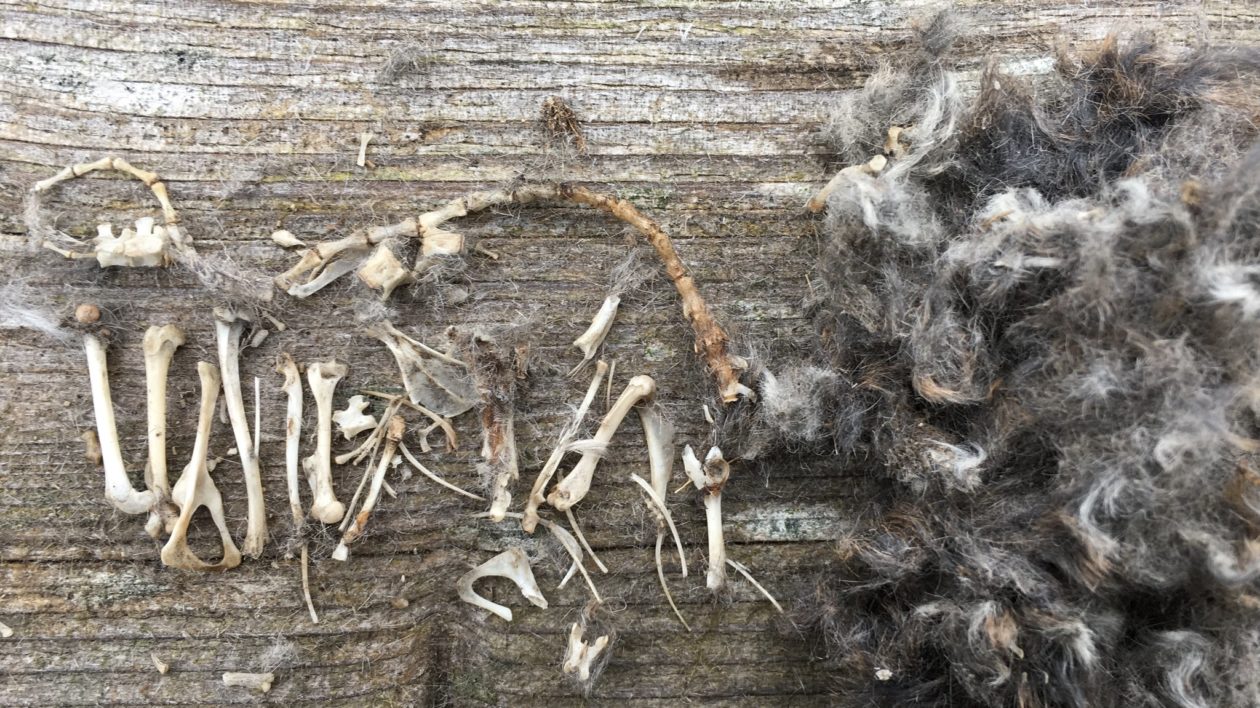
Collect Owl Pellets
Here’s a fun project if you want to learn more about the owls in your neighborhood.
Owls swallow their prey whole. They cannot digest fur, bone or feathers of prey. These are compacted in the owls’ bowel into a pellet that the bird then regurgitates. If you’re watching an owl and it looks like the owl is gagging or coughing, it is probably expelling a pellet.
These tightly compacted pellets can be found under roost areas used by owls. Owls are creatures of habit so often use the same trees and perches. If you locate a hooting pair of great horned owls on your evening walk, you can likely find their pellets.
These pellets can be dissected to see what the owls are eating. You should heat sterilize the pellet in an oven before working on them, and always handle unsterilized pellets with rubber gloves. You can often reassemble an entire mouse or vole skeleton from an owl pellet. It’s another way to get kids interested in the local birds.
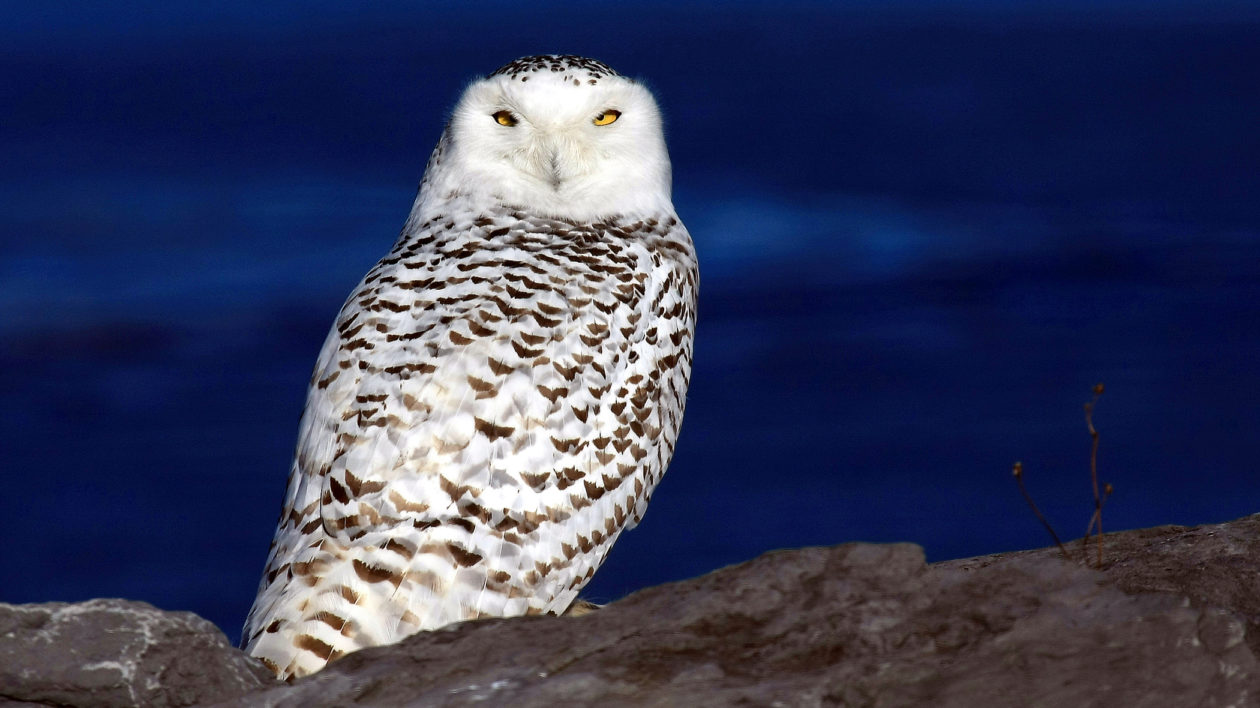
Snowy Owl Invasion
As you take your evening walks, you may well see other species of owls. There are 18 other species in North America, and once you train your eyes to look, you’ll be surprised at the cool species that are out there. Sites like Owling.com can help you identify and spot the full diversity of these fascinating creatures.
In the winter, some of the best owling is not even at night. Take the snowy owl. Usually, this is a species of the Arctic. But some years, snowy owls can be found in many parts of North America, from farm fields to airport runways. These irruptions, as they’re known, are tied to lemming abundance in the north country.
Local birding groups or the iNaturalist app can help you find a snowy owl near you. A snowy owl will often stay in the same general area for weeks or longer.
You can record your sightings for a citizen science effort called Project Snowstorm that tracks annual movements of snowy owls.
Seeing a snowy owl is a highlight for even the most-experienced birders. And the winter owl rarities don’t stop there…
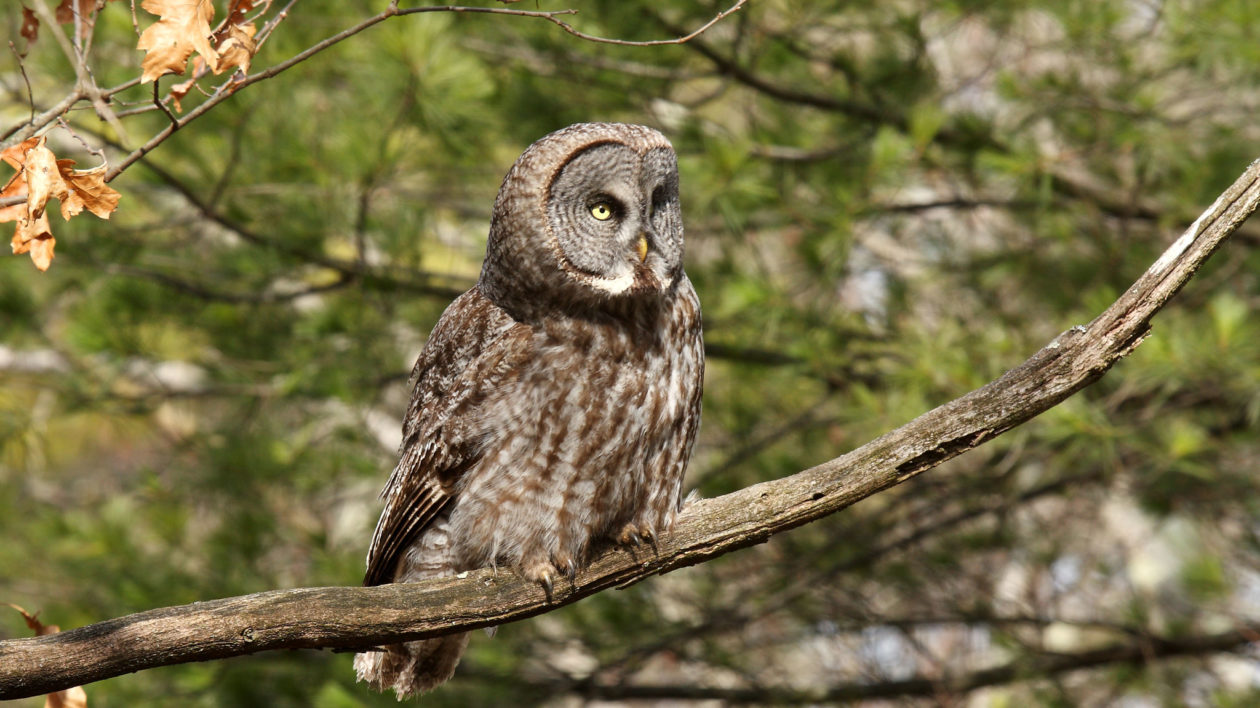
Northern Owls Head South
Three northern owl species – the great gray owl, boreal owl and northern hawk owl – irregularly appear in more southerly habitats during the winter.
As ornithologist Joe Smith writes, these species “all appear in large numbers at southern latitudes when there are fewer rodents in their typical, far-northern winter range. A study in Quebec demonstrated that irruptions of all of these owl species occurred every four years when rodent population cycles bottomed out. In this case, the irruptions represent a change in the movements of owls rather than a change in their population.”
I admit that I love observing birds but all-day bird counts and frenetic listing field trips have always held limited interest. However, heading out to spot a beautiful, rare bird is the kind of quest I live for.
In recent years, local birding groups have reported both northern hawk owl and great gray owl near our southern Idaho home, both highly unusual sightings. The northern hawk owl inspired our first family road trip with my son (he was then 2 months old). We found the hawk owl on a side street in Hailey, Idaho, and even witnessed it successfully hunting a vole.
The great gray owl was located in a city park in Boise, and we were able to observe it from about 20 feet away.
These winter outings bring wild adventure to vacant lots and little parks. They’re treasure hunts, with owls.
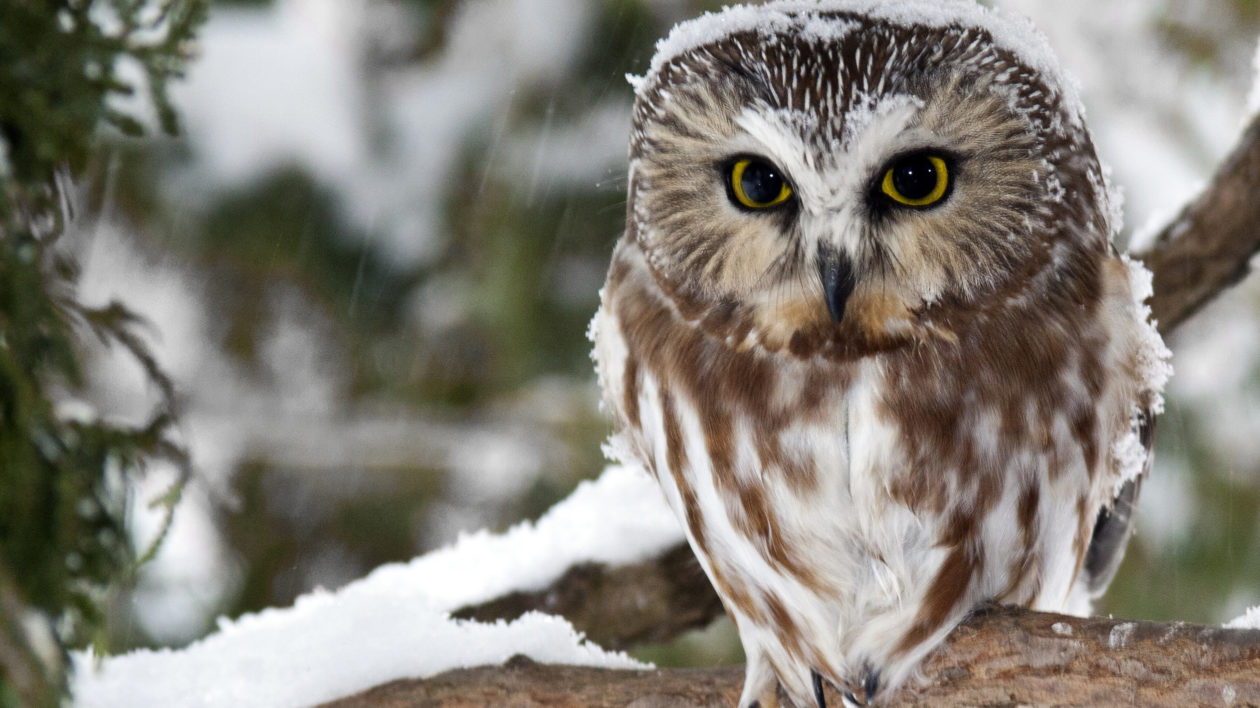
Owling Ethics
Owls are often highly visible at this time of year. Great horned owls are adaptable to people and thrive in our neighborhoods. The northern owl species often live in wilderness areas and are much less used to the pressures of humanity. Please give them space.
Some nature photography operators have begun tours, particularly in Minnesota, that feature winter owls as the main attraction. Unfortunately, some of these tours bait the owls with live mice.
My friend and skilled wildlife photographer Mike Furtman has actively campaigned against this practice. He points out that pet-shop mice can contain salmonella. Perhaps even worse, baiting acclimates these owls to people, which poses many dangers. The tours often occur near roads, increasing the chances of the owls being killed by passing cars. Please do not support tour companies that bait owls.
And, as with any wildlife photography, please give the owls plenty of space. I saw people getting right up to the great gray owl I spotted last winter, visibly stressing the animal. Your photo is not worth the owl’s life.
Also, many owls roost on private property. Please respect local neighbors and property owners. Their habitat is getting the owl through the winter so please respect their privacy and property rights.
These simple behaviors will help the owls and still allow you to enjoy one of the greatest shows of winter. Grab a pair of binoculars – or just your curiosity – and take a walk. The owls are out there, if you stop, look and listen.
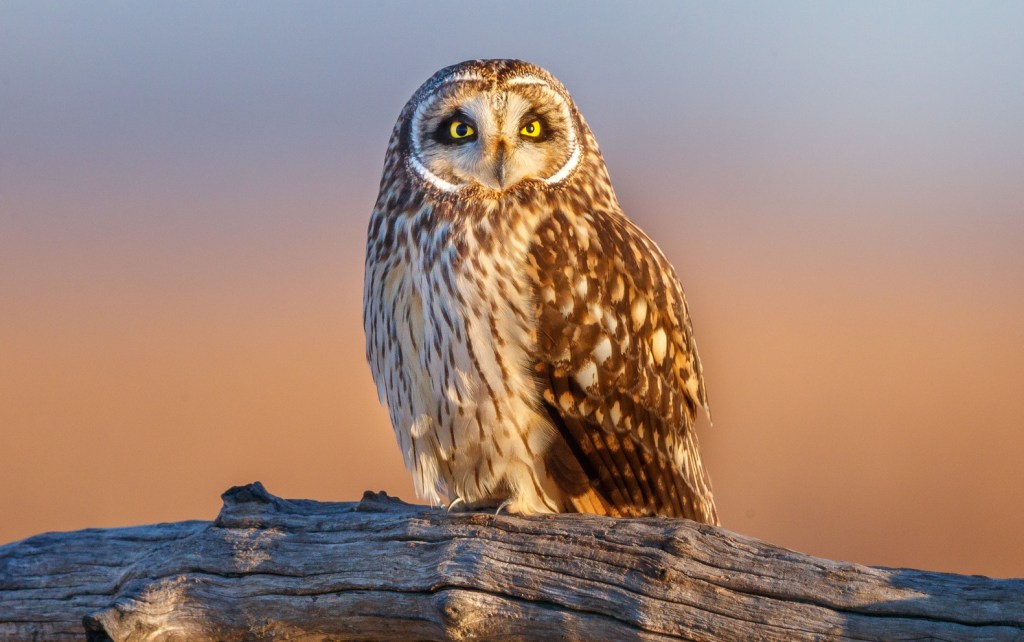



Very nice article and it seems you can never remind people enough to respect our beautiful birds by not stressing them out.
BEAUTIFUL! I LOVE OWLS!
I was hunting a nuisance raccoon last Spring by setting up a blind out of the back door of my garage. This raccoon would come late at night and demolish the hummingbird feeders on our deck….and I mean destroy them completely. Hummingbirds are my wife’s passion, so I know what I have to do. I had left the back flood lights on so I could spot the villain and get a bead on him with my .22 rifle. I’ve learned over 25 years that no other deterrent works. We live on 25 acres of land surrounded by miles of game area. If I live trap them, they just become a nuisance elsewhere, or return in under a week. Raccoons are a constant road kill menu for our crows. We have lots of them…
It was about 1:45 AM , and all was deathly quiet. I’d seen nothing other than a mouse, a garter snake, and those infernal June bugs that were hitting the flood lights and doing back-strokes on the cement. Suddenly, out of nowhere an owl swooped down right in front of me, snatched up three or four June bugs, swiveled his head around to look at me and then calmly rose back into the air with one wing beat. It disappeared into the backyard woods in another second, gliding about one foot off the ground. The total episode took place within about four to five seconds, but my mouth remained agape for long after that…..and my heart was pounding for quite some time too. All this, in total silence, without the slightest sound of a wing beat.
Been in love with owls ever since. I use an owl “hooter” call that I used to use for turkey hunting. Most nights the owl will come in quite close, especially if I’m patient enough and don’t “over call”. But I rarely actually spot them. I think they’re angered when they find out “they’ve been had.”
Karl Haehn
Columbiaville, Michigan
Do you have any information/tips on Screech Owls? I am probably calling them by the wrong name. For the past 10 or so years I have been putting up owl houses which I have made and have had owls nest in them. The houses are in my mango tree. I have pictures of the owlets when they peek out of the nest, pictures of the parents bringing food to them, (small what we call lizards) during owl hunting times. The hurricanes have played some havoc on them. The owls we see in our backyards are 8″ inches tall.
Hope to hear from you.
You are calling them by the correct name. There are eastern and western screech owls. I see or hear western screech owls occasionally. Nest boxes assist them greatly. Thank you for what you are doing. They are really interesting creatures. I tend to see them more in the spring and summer than in the winter. Thanks for writing. Matt
Thanks for the super photos
Given that this is a TNC communication one would expect more emphasis on preserving the habitat that includes owls in its complex community. Witnessing the hell bent to get the best photo activity around the presence of a visiting owl suggests that we are avoiding the fostering of good manners in visiting natural areas — suddenly owls have become subject for competitive photography rather than the messengers from nature that they actually are.
We should enrich our experience with owls beyond just seeing them. Questions should be posed:
Why are they here? What can we do to assure that their populations endure both where we see them and, in the case of many owls, where they reproduce and are normally found? Should they nest nearby what is the proper protocol to respect their needs to raise a family?
Such an initial inquiry is just the beginning as these species are an infinite source of inspiration for science along with the written and visual arts. Owls possess powers of vision and flight , that once considered, provide one with an expanded appreciation of them. Understanding these species can contribute to our appreciation of the importance of stemming the process of climate change, losses of specific habitats and the cumulative affects of pollutants. They become something far more than subjects to be seen. They are exciting emissaries from Nature that invite positive commitment and greater insights. They are of course species to be cherished and sustained.
Tony Angell
Author: The House Of Owls
Yale University Press: 2015
Tony,
Thank you for your thoughtful comment. I agree (and have emphasized in many of my writings) the importance of habitat for birds, and also that birding and other nature activities are much richer if you take time to learn a bit about natural history. I also believe, firmly, that enjoying nature builds a love of nature. I have seen this with my son and other kids in my neighborhood. If I turn owling into a “lesson” or try to impose a deeper meaning, they will tune out. But make owling a quest, and they are all in. It is fun. The kids are absolutely enamored with the owls and other creatures in our neighborhood. I believe this is a first step towards instilling a conservation ethic. Thanks for reading and writing. — Matt Miller
We have a barred owl in our neighborhood. Since the end of Oct he has been calling but his song is not a completed one. “Who cooks for” is the only call he utters. Why is he still calling as it is Jan 22.?
Thank you, Matthew, for all you do for the owls and for educating us in their ways. We have resident great horned owls that hang out in our huge pine trees on our 2 acres in rural San Diego county. They’ve done a great job of controlling the ground squirrel population which have been destructive to our landscape plants. I love hearing them hooting to each other up and down the canyon! Patty W.
I think Humans should use their brains (if they have one?) and be respectful of the Owls territory. All they want to do is live in peace and raise their offspring. I would never think to harm an Owl. They are the most majestic bird and my personal favorite! I try to get to the Cape May Zoo to see the Owls when I can. There is a beautiful Snowy Owl as you enter.
I don’t have an area for wildlife to roost, just a lot of squirrels. Sometimes a bunny and chipmunk. I guess that’s my wildlife. I couldn’t ask for more.
Thanks so much for an interesting article but most of all for including a section on ethics. Even well meaning people can do harm simply because no one took the time to explain that the animals they love are endangered nearly as much by good intentions as they are by malice.
Very good story, is there any kind of food we can put out to attract the owls?
Thanks for writing about watching owls. You can find more information about how to watch owls responsibly and how to interpret their behavior here: https://www.internationalowlcenter.org/respectful_observation.html.
Find the most comprehensive list of Great Horned Owl vocalizations here:
https://www.internationalowlcenter.org/ghovocalizations.html
I loved that you mentioned respecting the Owl’s space and the possible private property by where they have chosen to nest. Several years ago a pair of Barred Owl set up an amazing nest in our 40 year old pine tree…of which there is a stand of 3. Some birders and photographers would set up in the meadow to take pictures. At night they would come by with flashlights. I was kind of horrified. The pair had 2 babies which a month or less after they hatched I found them dead partially eaten by wildlife…the pair deserted the nest. I felt so sad. They needed their privacy. They were so beautiful and I could view them with my binoculars from my deck about 50 or more feet away.
I wish people really could realize that their pictures and flashlights are invasive. Myself dabbling with photography I learned at 16 years old that sometimes it is most important to “let things live in your eye not die in your hand”…a wise naturalist named Art Thompson told me that the summer of ’66 when I attended Minnesota Outward Bound at 16 years old. Changed my life forever.
I have some I think great photos of twin barred owls and in one photo the mother is feeding a owlet a long long worm and is a delightful photo. If you would ever like to use any of my photos please let me know.
Love the article Matthew. And thanks for mentioning that baiting practices are unethical.